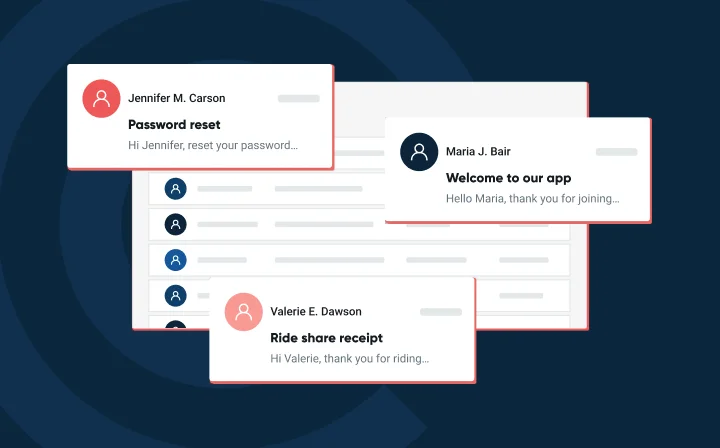Email’s Not Dead S6, E5 recap: The real power behind BIMI and why it matters


You can’t simply walk into Mordor – or inbox branding – without doing the groundwork. In this episode of Email’s Not Dead, email industry veteran Matthew Vernhout joins Eric Trinidad, Jonathan Torres, and Thomas “T-Bird” Knierien to explore the reality of BIMI (Brand Indicators for Message Identification).
BIMI turns your brand logo into a trust signal in the inbox. But that tiny icon represents a long list of behind-the-scenes work. From authentication protocols to sender reputation, this episode uncovers what it takes to earn visual credibility in a mailbox provider’s world.
Scroll down to watch the full episode – or read on for our takeaways!
It sounds simple: upload your logo and make your emails look sharp. But that’s not how BIMI works. It requires technical precision and strong sender hygiene. More importantly, it rewards brands that consistently protect their domains and communicate securely.
“BIMI – Brand Indicators for Message Identification – is the idea of putting a logo, an icon, next to your email name. So basically taking that avatar slot. It’s a way to associate a brand’s identity with their domain.”

This isn’t just about aesthetics. It’s about showing mailbox providers that your messages come from a legitimate, authenticated source. Recipients see a clean logo. Mailbox providers see verified identity and a track record of secure sending.
Before BIMI becomes visible, you need the basics in place. That means setting up the essential trio of email authentication standards: SPF, DKIM, and DMARC. Each piece verifies a different part of your sending behavior. Together, they form the baseline for trust.
“BIMI is a reward for doing authentication well and getting to an enforcement status. If you’re not doing DMARC at either p=quarantine or p=reject, BIMI’s not gonna work. That’s step one.”

This is the housekeeping every sender should already be doing. Without it, there’s no BIMI, no logo, and no shortcut around it.
Email clients are designed to filter out noise. BIMI helps them decide what belongs in the inbox and what doesn’t. For the recipient, the logo next to your brand name makes the message look intentional. For the platform, it confirms that the domain has been verified and authenticated.
“If I see a logo I know and trust, it feels more legit – like, ‘Okay, this is definitely from Hot Topic.’ It builds that instant recognition and trust before I even open the email.”

That first impression matters. A logo can signal professionalism, brand safety, and trustworthiness before the subject line gets read.
This is where the show gets honest. The hosts make it clear that BIMI is a reward, not a given. It’s easy to think of it as a cherry on top – just know you need to bake the cake first. BIMI comes last because it builds on a working infrastructure.
“I like to think of it as a cherry topper… but it’s not as easy as, ‘Hey, you’re doing well – boom, you get a logo now.’ There’s a bit of legwork. Is the juice worth the squeeze? That’s what we want to dig into.”

This legwork includes building a compliant SVG file, managing a clean DNS, and potentially purchasing a Verified Mark Certificate (VMC). None of that sounds glamorous, but all of it matters.
Even the best BIMI setup doesn’t guarantee uniform results. Some mailbox providers support BIMI. Others do not. Among those that do, rendering depends on device type, message type, and email client.
That means brands need visibility into what’s working. Mailgun customers can use logs, analytics, and monitoring tools to see where their emails land, how often their authentication passes, and whether their logo shows up as expected.
The most successful email programs focus on more than just compliance. They prioritize consistency, brand safety, and audience engagement. BIMI helps build credibility, but it does not replace reputation. It reflects it.
“As a brand owner, you can assign your own logo now… BIMI ties your logo to your domain through proper authentication so there’s no confusion.”

Most brands want that polished inbox look. Very few realize what goes into earning it. BIMI sends a signal that you’ve taken care of your domain, your infrastructure, and your reputation. The brands that show up with a logo have already done the hard work.
To get started:
BIMI is a modern standard built on strong practices. Mailgun gives you the tools to meet them. Whether you need a domain audit, help with record setup, or guidance on your logo strategy, we’re here to help.
Talk to a deliverability expert and find out what it takes to turn your brand into a trusted name in every inbox.
Or watch the full episode below to learn more about BIMI: